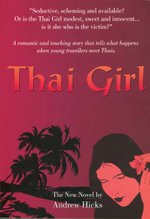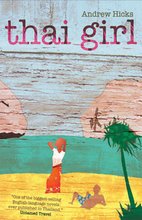
A junk trading under sail from China passes Hong Kong’s Lantau island in about 1979. Are the excavations on the island the beginnings of Discovery Bay, the upmarket residential complex?
The rare places where two different worlds collide are always extraordinary, bizarre even. One such I remember well was the arch-capitalist British colony of Hong Kong, a brash gold tooth amongst the decay and recession of communist China. For me, living there in the late seventies and early eighties was always stimulating and a constant challenge to the senses.
One of the strangest sights was when time-worn Chinese junks bound for the Pearl River estuary would slip into Hong Kong waters and pass through Victoria Harbour rather than take the long seaward passage around the island.
These junks were of rough unpainted wood, relying solely on their iconic bat-like sails as they had no auxiliary power. At the mercy of the strong winds and tides, they would come close inshore and wait for more favourable conditions before continuing. For their two man crew and their non-perishable cargoes of baskets, timber and bricks, time was of no importance.
How tough a life that must have been for the men, exposed to the elements on board with minimal shelter, always at risk of disaster and for minimal reward. How they must have gazed open-mouthed at this vast harbour, packed with all the ships of the world, the showy high rise buildings crowding the shore line and climbing the lower slopes of Victoria Peak.
As a display of capitalist excess, the most densely populated place in the world, the most successful city state in all of Asia, how they must have longed to see more, to swim ashore, to taste a slice of the action. Yet they would always sail on, tacking against wind and tide, patiently and almost imperceptibly inching forward along the shore line, remote observers from another world.
From our eleventh floor balcony facing west towards Cheung Chau and Lantau we could occasionally watch these bat-like apparitions as in silhouette they crossed the golden lane of shimmering sea that ran between us and the setting sun. They were tantalizingly distant but occasionally we ran alongside them and took some memorable photographs from our own sailing junk, the ‘Huan’.
This junk of 140 tons was several times larger than they and we ran her as a sail training charity called ‘the Adventure Ship’. One of my best experiences was crossing the South China Sea on a five day voyage to Manila in the Philippines with forty Hong Kong teenagers on board. Lying on the bow watching the dolphin cavorting on our bow wave, finding flying fish on the deck in the morning and sitting high on the poop deck as we ran before a force seven gale under full sail made all the hard work of setting up the organisation worthwhile.
Later when living in Singapore there were more junks to be photographed. From my office in the university, I could see them approaching the barter trade centre at Jurong on the south west of the island. This place was a nineteenth century throwback where Indonesian sailing vessels of all styles including junks sailed in from Sumatra and further afield bringing goods such as charcoal and mangrove stakes to be bartered for tinned food, soy sauce and cheap furniture.
As the crew had no papers, they were not allowed ashore and the centre was closed to visitors, but I was able to sail in on my own keelboat and photograph them, my Pentax clicking frantically. To watch an arriving crew drop sails and kedge their craft up the river by rowing the anchor a hundred yards ahead and then hauling on the line was an remarkable sight. To see the tired crews washing the salt out of their clothes and relaxing on board with a guitar was to eavesdrop on a yesteryear that is now all but extinct anywhere in the world.
This was an extraordinary point of contact between the slick modernity of Singapore and a Conradian world of rat-infested craft with creaking hulls and tattered sails facing the vagaries of wind and tide with a timeless optimism, perhaps unaware that theirs is the final chapter in a long and rich tradition of trading under sail.
When after five years in Singapore I found myself living back in England, a junk again became an important part of my life. For my sins I was chairman of the late lamented Exeter Maritime Museum and our largest operating exhibit was a replica of a traditional Cantonese fishing junk.
In 1992 we boldly took her down the Exeter ship canal and the Exe to the open sea. We crossed the channel, sleeping in the fish holds, rounded Ushant and joined the magnificent tall ships festival in Brest, the biggest and best ever. Coming into Brest watched by thousands on the harbour walls as we fired off red Chinese fire crackers from our stern and later sailing with a fleet of hundreds of historic and ethnic vessels to rally at the maritime museum at Douarnanez were high points in my eternal fascination with the sea and sailing ships.
Of course everything has been changing fast. Chinese coastal sailing boats are now made of concrete and are powered by diesel engines just like the rest, and the sailing junks I saw passing through Hong Kong are now almost certainly extinct. No Chinese would mourn their passing though they tell much that is important about China and its tortuous history.
The junk rig is still a design whose essence has hardly been bettered, though it goes back more than a thousand years. Its sails, stiffened with bamboo, anticipated the fully battened sails of modern yachts. The complex system of sheets attached to the end of each such ‘batten’ can be tweaked to eliminate the twist that still spoils the efficiency of many a modern sail and the design enables a single crew member to tack or reduce sail in heavy weather with comparative ease. One remembers how Blondie Hasler’s tiny folkboat ‘Jester’ successfully replicated the junk rig to win the first single handed transatlantic race.
The huge importance to China of the junk sail was that it was to beat into the wind and so could go anywhere and not be at the mercy of the trade winds, as square riggers always are. This breakthrough had enormous political and economic implications, allowing China’s sailors such as the legendary Cheng He, to expand the emperor’s influence and to trade with an expanding world.
It was many centuries before the Europeans began to catch up, beginning first with the Portuguese whose caravel rig could also sail to windward, thus enabling them to establish a colonial empire spreading from Brazil to Angola and Mozambique, Goa, Malacca and Macao. They were followed and eclipsed by the Dutch and then the British, but theirs was an extraordinary achievement for so small a nation, sadly tarnished by their reluctance to relinquish control of their colonies when the time for independence was overdue.
China was technologically advanced when Europe was nothing, yet China’s tragedy was that when Europe had its renaissance of ideas and a technological and industrial revolution, China remained an inward looking ‘middle kingdom’ and was stagnating in every way. With scholarship regarded as the mastery of classical knowledge rather than the search for originality and innovation, society was bound to ossify and to be overtaken, despite the earlier technological lead. Somehow the junks sailing into Hong Kong, once at the cutting edge and now dinosaurs, were metaphors for China’s brilliance and subsequent decline.
The Chinese emperors had thus been no match for the fire power of steam powered British gunboats. In the Opium Wars the junks were cut to pieces. China was humbled and forced to sign the ‘unequal treaties’ giving European access to its trade and ceding Hong Kong island to the British lion. Thus more than a century later, I came to lecture in law for seven years at The University of Hong Kong where two worlds still collide.
The story of Thailand and how it escaped formal colonization by the Europeans is very different indeed. Foreign visitors to Bangkok in the early nineteenth century would have seen Chinese trading junks forming a forest of masts, but by the end of the century the Chao Phraya River would have been dominated by European shipping. Nonetheless, Bangkok remains essentially a Chinese city, formed and influenced by its dominant Chinese population which today supplies the commercial dynamic of Thailand. Most of the migrants arrived a few generations back with no more than a mat and a pillow after a tough and dangerous passage on a small sailing junk.
Thailand’s fascination with the West, its technologies and trades, its political ideas and systems has continued, so that now Bangkok is a modern city. But despite the gloss of consumerism and increasing material wealth, the influence of the countryside, belief in the spirits and Buddhist traditions of tolerance and non-confrontation still perhaps make Thailand much more Asian than Western. Like everywhere, it’s changing fast but, thankfully, the Thai people seem to have a capacity for retaining its own special characteristics.
Thailand is an extraordinary place to live in as a foreigner. It truly is one of those rare places where two very different worlds coexist, if not collide. Just as China has lost its sailing junks, I wonder what Thailand will lose in the course of its own ‘modernisation’.





1 comment:
This comment will be mostly off-topic. Although I am a lover of junk. ;-) I just wanted to say how much I have enjoyed reading your posts. I have not gotten a copy of Thai Girl yet but also look forward to that. Since my holiday to Thailand in May 2007 I have been quite nearly obsessed with all things Thai. I have been trying to learn more of the language and read as many blogs as I can about this wonderful country and your writings have certainly helped to clarify as well as confuse. Now, within the space of a minute I want to move there, stay here (Denver, USA) but visit more often, and never set foot there again. Lurking over at Phil.uk.net confuses me even more as it now seems that he is preparing to make a change in his living arrangements - but he is just alluding to what they may be. I think that at 49yo I most likely fall into a similar mental frame as he. I love to visit, I want to live there full time, but when i do I would maybe tire of it and leave. Gee, I wonder which way this all will work its way out. Not too surprisingly, I find the stories that involve your interactions with Cat and her village to be the most interesting. I think that i project myself into those situations that you experience and write about and then wonder how I would comport myself. In such a rural setting I think i would find myself getting quite bored for much of the time. No real way to know in my current circumstances. Anyway, thanks for sharing.
Post a Comment